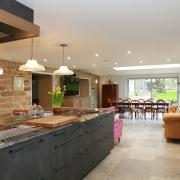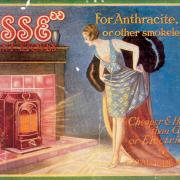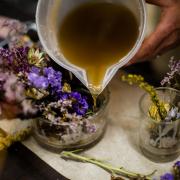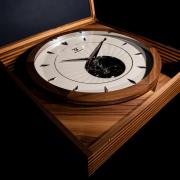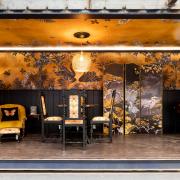For 300 years workers in one corner of Manchester have been brightening British lives – and even deaths. Martin Pilkington reports

We may think the Industrial Revolution was grey and grimy, but it had a colourful side too, as evidenced by the forbears of Lancashire’s Little Greene Paint Company. Historical records show that on the site where the organisation’s offices still stand dyes were produced in the early 18th century, and more information keeps being unearthed.
‘Our researches have got back now as far as about 1718, when a lease was placed on this site for a new building to make a dye works - that’s the earliest reference to any company of this name here,’ explains current managing director David Mottershead, based in a corner of east Manchester. ‘It has to be said that between now and then there have been lots of different businesses to do with colour or paint here. It’s a long history on what is archeologically a significant industrial site, making coloured materials for the best part of 300 years. Nobody is pretending it’s exactly the same company but it’s like your local pub – burned down, rebuilt, innumerable owners, still the same place.’
Customers have varied, including the dearly departed, but colour is a constant. ‘Initially, the factory here was grinding wood to extract dye for the cotton industry,’ says David. ‘Over the centuries it has made lacquers for coffins, enamel for clock faces, car paints, and other associated products including industrial paint for the engineering industry that remained strong in Manchester long after King Cotton had gone.’
The vast majority of Little Greene’s £16m turnover is now in decorative paints aimed at the top end of the market. Some are decidedly contemporary, but the historic side is vital for the business too. ‘More than half the housing stock in this country is at least 100 years old so one in two of us lives in a home with real historical connection. To be able to find colours that work and respect the original building, is a nice thing to do,’ David says.
That historical aspect has led the company into cooperation with English Heritage. ‘We feel it’s important to help the work they do in the restoration and conservation of historic buildings,’ he says. The company donates a small percentage of the sales price of certain products to English Heritage, and has provided materials used for many major refurbishments.
‘In return, they give us access to their massive archives of paints and wallpapers. On particularly significant buildings like Kenwood House, or Eltham Palace where our paints will be used during a renovation project, we research their documentation, look at the original colours from a chemical point of view, and if it’s of interest include them in our colour cards.’
Little Greene paints have been provided to those stately homes and dozens of others including Audley End and Wrest Park. Closer to home, the company contributed materials to the recently completed restoration of Mrs Gaskell’s House in Manchester.
David believes it’s the way their paints are put together that suits them to such work. ‘We use a very high level of pigmentation – we formulate paint in a complex way to reach the desired end, so a certain blue may use six or seven different pigments - maybe with some pink and even green, and a spot of yellow, as well as the core blues - to satisfy the eye when you look on the finished result. You could formulate a similar colour using two pigments but it would be much harsher. When you compare the two you understand the difference - the tonality of ours changes in different lights.’
Worryingly for some of us, their definition of history takes in what feel like quite recent times. ‘There was a lot of very innovative building in the late 20th century, and we wanted to analyse those 60s, 70s and 80s colours so we brought in historic materials consultants Crick Smith at Lincoln University.
‘We produced a palette of what we’d call retrospective colours - some of them very bright. There are good societal reasons why they appeared then - a lot of immigration from the Indian sub-continent where the use of colour is much bolder than it was traditionally in the UK, and also chemical innovations with new pigments. And there was money around for younger people to do daring things their parents and grandparents hadn’t been able to do.’
The company sells across the country, and also has showrooms in Paris and Munich, a far cry doubtless from what was envisaged when the first dye works were set up at the confluence of the rivers Irk and Irwell, but there is pride that with both their contemporary activities and their historical research they’re adding to the tradition. ‘It’s a tiny bit of history that we are sitting on here,’ says David. ‘And every now and again someone pops up with another nugget about the place. We just keep adding to the story.’




